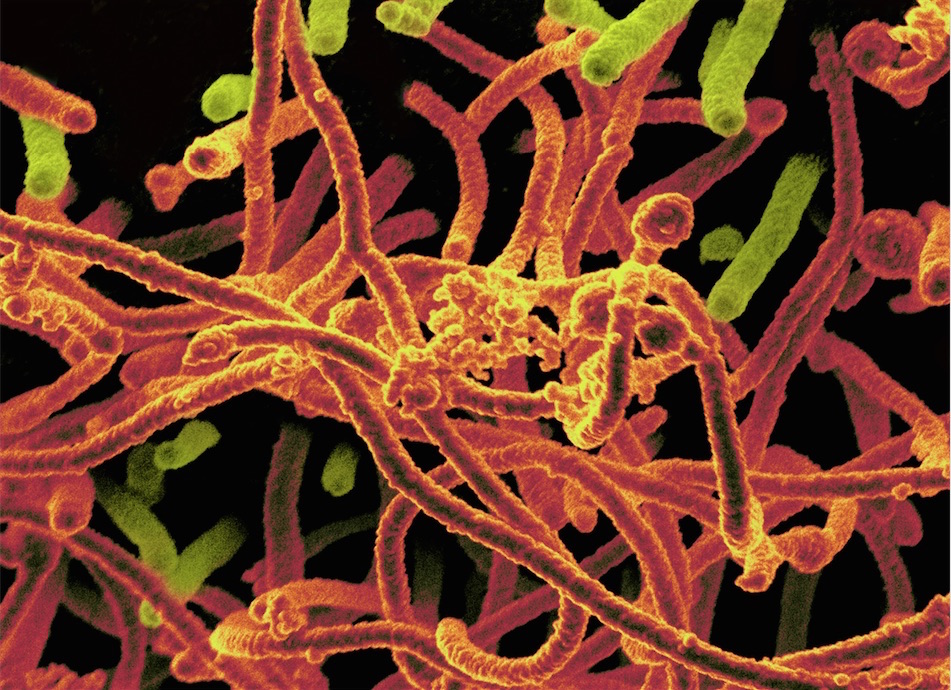How Many Americans Could Get Ebola? Study Provides Estimates

The United States could have had more than a dozen Ebola cases monthly during the height of the epidemic in West Africa last year, and a half dozen cases in treatment simultaneously, according to a new study.
Researchers estimated the potential highest number and lowest number of U.S. Ebola cases, and how many people would need treatment in this country at the same time. The study used data mostly from the fall of 2014, when the rate of new Ebola cases in West Africa was at its highest. The actual number of people in the U.S. who had Ebola in 2014 — who either contracted the disease while working in Africa, or became infected here while treating a sick patient — stands at 10.
For their report, the researchers took into account the number of people who traveled to the United States from Liberia, Guinea and Sierra Leone, as well as the number of health care workers involved with the Ebola response in those countries, including those who caught the disease in West Africa and were evacuated to the United States.
The researchers estimated that under the 2014 conditions, there could be as many as 14 U.S. Ebola cases per month, and as few as 1 case per month.
If each infected person stayed about 15 days in treatment, then the average number of hospitals beds needed to treat U.S. Ebola patients at any point in time could be as high as 7 and as low as 1, the study found.
"The aim of our model was to identify how many cases might be being treated at any one time [in the United States] during the outbreak," said study researcher Gabriel Rainisch, an epidemiologist at the Centers for Disease Control and Prevention. The model was requested by policy makers as a way to plan for possible future U.S. Ebola cases, Rainisch said. "Policy makers didn’t want to be in a situation where there was not enough capacity," to treat Ebola patients in the United States, he said.
If Ebola cases arrived in clusters, then the number of hospital beds needed could be higher, around 13 beds at any one time, according to the model. [Where Did Ebola Come From?]
Sign up for the Live Science daily newsletter now
Get the world’s most fascinating discoveries delivered straight to your inbox.
In real life, the first U.S. Ebola patient in 2014 was Dr. Kent Brantly, who was evacuated from Liberia in August. The highest number of Ebola patients being treated simultaneously in the United States last year was four.
The researchers assumed that travelers or health care workers with Ebola who didn't know they were infected before they traveled back traveled to the U.S. could infected as few as zero, and as many as two other people here, before or during their hospitalization. In October last year, the United States had its first case of Ebola in a traveler from Liberia, who infected two other health care workers during treatment at a hospital in Dallas. Other U.S. Ebola cases — including a health care worker in New York who did not know he was infected until arriving back in the United States — have not infected any other people.
Since the Dallas cases, "there's been a tremendous effort to train healthcare workers" in treating Ebola patients, and to provide additional support to U.S. hospitals so that they are prepared, Rainisch said. So although it's possible that each U.S. Ebola case could infect an additional two people (which affects the estimate for the highest number of cases), "my feeling is that's unlikely" to occur in the future, Rainisch said. As of January of this year, there were 71 beds in hospitals across the United States that could be used to treat Ebola patients.
This is "sufficient to care for our highest estimated number of Ebola patients," the researchers, from the Centers for Disease Control and Prevention, write in an upcoming issue of the journal Emerging Infectious Diseases.
The researchers' model can be used in future international outbreaks to plan for U.S. cases that need treatment , they said. It could also be updated to provide new estimates if the conditions of the current Ebola outbreak change dramatically, Rainisch said.
Follow Rachael Rettner @RachaelRettner. Follow Live Science @livescience, Facebook & Google+. Original article on Live Science.

Rachael is a Live Science contributor, and was a former channel editor and senior writer for Live Science between 2010 and 2022. She has a master's degree in journalism from New York University's Science, Health and Environmental Reporting Program. She also holds a B.S. in molecular biology and an M.S. in biology from the University of California, San Diego. Her work has appeared in Scienceline, The Washington Post and Scientific American.










